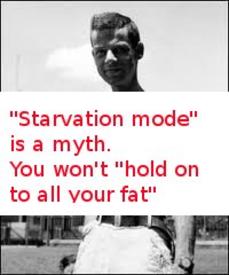We are pleased to announce that on March 4, 2025, an updated Rich Text Editor will be introduced in the MyFitnessPal Community. To learn more about the upcoming changes, please click here. We look forward to sharing this new feature with you!
Whole Wheat vs. Whole Grain

roadsta
Posts: 6 Member
Hi all, I'm a newbie to this carb counting and recently went to a diabetes teaching class (am 64 yrs old, pre-diabetic with a very strong genetic factor and trying desperately to avoid becoming type 2. Sister was type 1 and passed at age 26 of diabetic complications, 2 brothers are type 2). The registered dietician teaching the class emphasized eating whole grain bread, pasta, etc. I have not had white bread, white rice or white pasta or white anything in many years. I typically have whole wheat pasta, but I'm really confused about the bread. Trying to keep calories, carbs and sugars down and I've been eating Natures Own 100% Whole Wheat. Calories per slice are 50, Total Carbs are 10, and Sugars are 1g. My question may sound dumb so please forgive me..... Is 100% Whole Wheat the same as 100% Whole Grain? Any recommendations as to what type of bread is best for a diabetic? Thanks in advance and I'd appreciate any advice. Cheers!
0
Replies
-
I usually go for multi-grain since whole wheat only means that the bread needs to include every part of the wheat plant (there are three, but I can't remember the names). That is where they get you...as long is it contains all the essential parts of the wheat plant it can be whole wheat no matter the sugar or extras put in. Multi-grain however gives an assortment of different fibers and carbs and is generally more conscious of nutrients than any "whole wheat" product. Try Orowheat multi-grain or 10 grain. They are delicious, filling, and healthy. Just my .02!0
-
I love the nutty grain bread. It's got 7 whole grains and... sunflower seeds! I thought it would be weird (bought on accident), but oh my! It's amazing lol.0
-
I love the nutty grain bread. It's got 7 whole grains and... sunflower seeds! I thought it would be weird (bought on accident), but oh my! It's amazing lol.
Good call! Exactly what I am talking about. 0
0 -
So, even if a multi-grain or 10 grain is higher in calories, carbs and sugars, do you feel that it's still better than whole wheat? That's my confusion........0
-
100% whole grain bread tends to average lower on the Glycemic Index, so I would go with that. 100% whole wheat breads aren't a bad choice, but the grain tends to not affect insulin levels as much.
Edit: Oh, and you can use this as a guide: http://www.health.harvard.edu/newsweek/Glycemic_index_and_glycemic_load_for_100_foods.htm0 -
So, even if a multi-grain or 10 grain is higher in calories, carbs and sugars, do you feel that it's still better than whole wheat? That's my confusion........
It's only more calorie dense because there are more nutrients packed in. It will also keep you fuller for longer, which is a great thing. That means you won't be hungry for 2nds. You still want to watch how much you eat, no matter how many "good" things are in them, but yes, the multi grain is in essence, better than whole wheat, because you benefit from all 5/7/10/14 grains as opposed to only one grain. Make sense?0 -
Hi, thanks much for your response. Can you pls provide name brand so I know what to look for in the stores? Thanks again for your help. I'm finding this so confusing. I spent about 20 minutes checking and reading all labels, and the Nature's Own 100% whole wheat had the least amount of calories (50 per slice), carbs and sugars and that's what I was told to look for. So I guess I just don't understand how another type of 10 grain let say as an example would be 100 calories per slice, Total Carbs of 17 and sugars of 5 would be better for me (pre-diabetic) than say 50 calories, 10 g total carb, and 1 g of sugars. What am I not getting? This is what I just am not understanding. Thanks for your patience!0
-
100% whole wheat is just that. 100% whole grain. Breads that are labeled "multi-grain" can contain anything, including white flour. Check the ingredients on any bread, no matter what claims are made on the label.0
-
OK, yes..... now that's making sense. Thank you!0
-
I think that's part of my confusion. I understand the lower glycemic index is better but I've not seen any bread labeled as 100% whole grain.0
-
Even better would be to quit eating breads! Totally unnecessary food with way too many carbs and sugars for the nutritional value.0
-
100% whole wheat is just that. 100% whole grain. Breads that are labeled "multi-grain" can contain anything, including white flour. Check the ingredients on any bread, no matter what claims are made on the label.
You know that white flour is commonly in all whole wheat products, right?
Whole white wheat flour is made from white wheat and is ground from the entire grain, bran, germ and endosperm.
In any case, all breads/bread products are going to be fairly high in carbs/sugars. If it's a major concern, you can easily omit breads from your diet. My father is full on diabetic, and his doctor always pushes the higher grain breads over single because there are more benefits. 0
My father is full on diabetic, and his doctor always pushes the higher grain breads over single because there are more benefits. 0 -
Orowheat is delicious. They have all the types we have listed.0
-
Even better would be to quit eating breads! Totally unnecessary food with way too many carbs and sugars for the nutritional value.
Gonna second this. My mother is a Type 1 and in order to better control her sugars she finding it more prudent to skip grains altogether. I think it's madness any diabetes education would encourage the consumption of any grain.0 -
The best bread/starch/grain is the one with a minimal effect on your blood glucose levels. Let your meter be your guide to establishing your own personal glycemic index.
Basically, rather than following a set number of carbs per meal as recommended by so many CDE's, you evaluate a particular meal using meter readings before eating and then at your peak.
http://www.phlaunt.com/diabetes/14045524.php ( I also HIGHLY recommend reading the rest of this site!!)
http://loraldiabetes.blogspot.com/2006/10/test-review-adjust.html
http://lizzysdlounge.com/2012/03/14/testing-101/
For many diabetes, seeing the immediate effect of those "healthy whole grains" on blood glucose is all the incentive they need to give up grains. It was for me!0 -
100% whole wheat is just that. 100% whole grain.
No.
http://www.fitday.com/fitness-articles/nutrition/healthy-eating/the-difference-between-whole-grain-and-whole-wheat.html
Sorry. ETA make sure to read the comments. It's not as simple as Whole Wheat=Whole Grain or vice versa.
Lots of confusion.0 -
I eat Healthy Life 100% Whole Wheat with omega 3. Check out some of the links that have been put here for you.
 0
0 -
I am wondering are their any replacement foods then? To be able to give up breads totally? Or do you just not have anything resembling a sandwich etc ever again? Just wondering as its never occurred to me! Thanks0
-
Multi grain doesn't mean whole grains, by the way! Read the labels.
I go with whole grains more than whole wheat personally but I think it's about the same frankly.
You can try sprouted grain breads though, they're usually in the frozen baked products section.0 -
You want "whole wheat". This means that the vitamin/fiber dense (bran and germ) portions of the wheat are within the product, not just the starchy portions (endosperm).
If you look at the ingredients list, you want the FIRST ingredient to be "Whole wheat flour', not "enriched" flour or anything else.
I am not a registered dietitian, but this was over emphasized in a class taught by one.0 -
xx0
-
I think that's part of my confusion. I understand the lower glycemic index is better but I've not seen any bread labeled as 100% whole grain.
me neither. also heard a nutritionist spell out that whole grain meant unprocessed ie whole grains and not flour.0 -
Legally "multi grain" does not mean that there is whole grain in it. It just means it has to include at least 3 or 4 different grains (depending on the country). It could still be white bread, just made out of different grains.
"whole grain" means - legally - that it has to include at least 90% whole grain flour.0 -
That must have been a misunderstanding. "Whole grain" means that the whole grain is used when the grain is milled to get the flour. White bread gets rid of the shell of the grain which contains the most vitamins and fiber.I think that's part of my confusion. I understand the lower glycemic index is better but I've not seen any bread labeled as 100% whole grain.
me neither. also heard a nutritionist spell out that whole grain meant unprocessed ie whole grains and not flour.0 -
That must have been a misunderstanding. "Whole grain" means that the whole grain is used when the grain is milled to get the flour. White bread gets rid of the shell of the grain which contains the most vitamins and fiber.
I did wonder, must dig out the video and watch it again. Perhaps she mis-spoke.
Different countries have different rules for naming these things too, for example in the UK....Wholemeal - all the flour used as an ingredient in the preparation of the bread
must be wholemeal. The term “wholemeal” is not defined in law, however it is
generally accepted that wholemeal flour is the entire wheat grain, which
contains the bran and the germ.0 -
So, looking at the Nature's Own 100% Whole Wheat label, the first ingredient is "Stone Ground Whole Wheat Flour" and no mention of "enriched flour" or "enriched white flour", so I'm thinking this is OK when I absolutely MUST have a sandwich! Thanks all.0
-
I am wondering are their any replacement foods then? To be able to give up breads totally? Or do you just not have anything resembling a sandwich etc ever again? Just wondering as its never occurred to me! Thanks
I've made oopsie rolls into hotdog buns. I make grilled cheese and french toast using flax meal bread. I make lettuce tacos and wrap burgers in large lettuce leaves. Spaghetti squash, shaved broccoli, shaved asparagus stalks, julienned zucchini or eggplant replace pasta. There are tons of low-carb replacements that do NOT raise my blood glucose significantly and that's what's important to me. My eyesight, kidneys, toes and fingers are more important than a hoagie.0 -
100% whole grain bread tends to average lower on the Glycemic Index, so I would go with that. 100% whole wheat breads aren't a bad choice, but the grain tends to not affect insulin levels as much.
Edit: Oh, and you can use this as a guide: http://www.health.harvard.edu/newsweek/Glycemic_index_and_glycemic_load_for_100_foods.htm
According to that link, white wheat bread and whole wheat bread have exactly the same glycemic index, and all of the grain products are high, even whole grains. If I were diabetic, which is a distinct possibility in the future given my family history, I would be trying to eat a lot less grain, period, and eating more meat, unsweetened dairy, non-starchy vegetables, beans if my blood sugar could take it, and fruits with a lower glycemic index.
P.S. I got my dad testing his blood sugar at intervals before and after meals so he could see how different foods and combinations of foods actually affected his blood sugar, rather than relying only on general recommendations.0 -
In the USA, corn is a "whole grain". Companies use it as a cheap additive to list their foods as whole grain. Check the label, if the first or second ingredient is corn stay away. Corn isn't terribly nutritious and while I love a good summer corn on the cob, or popped popcorn to take the edge off my hunger, there are better grains to eat. Take whole wheat, or something with oats or rye in it over corn. In the case of bread, corn is a filler, and we all know how bad fills are.0
-
In Canada 'whole grain' means the flour is made from all the parts in the natural proportions. 'whole wheat' means that while it does contain all the parts they're added after the white flour is ground and not in the natural proportions. I can have less nutrients than 'whole grain' but is still better than white flour.0
This discussion has been closed.
Categories
- All Categories
- 1.4M Health, Wellness and Goals
- 394.3K Introduce Yourself
- 44K Getting Started
- 260.5K Health and Weight Loss
- 176.1K Food and Nutrition
- 47.5K Recipes
- 232.7K Fitness and Exercise
- 442 Sleep, Mindfulness and Overall Wellness
- 6.5K Goal: Maintaining Weight
- 8.6K Goal: Gaining Weight and Body Building
- 153.1K Motivation and Support
- 8.1K Challenges
- 1.3K Debate Club
- 96.4K Chit-Chat
- 2.5K Fun and Games
- 4K MyFitnessPal Information
- 16 News and Announcements
- 1.2K Feature Suggestions and Ideas
- 2.7K MyFitnessPal Tech Support Questions
















